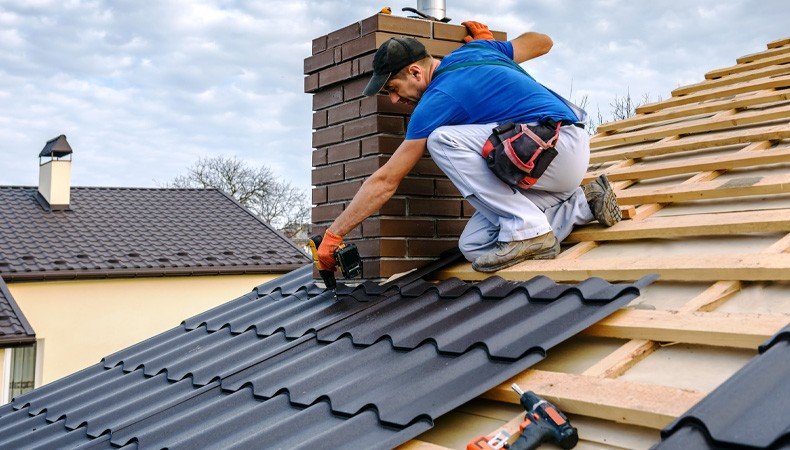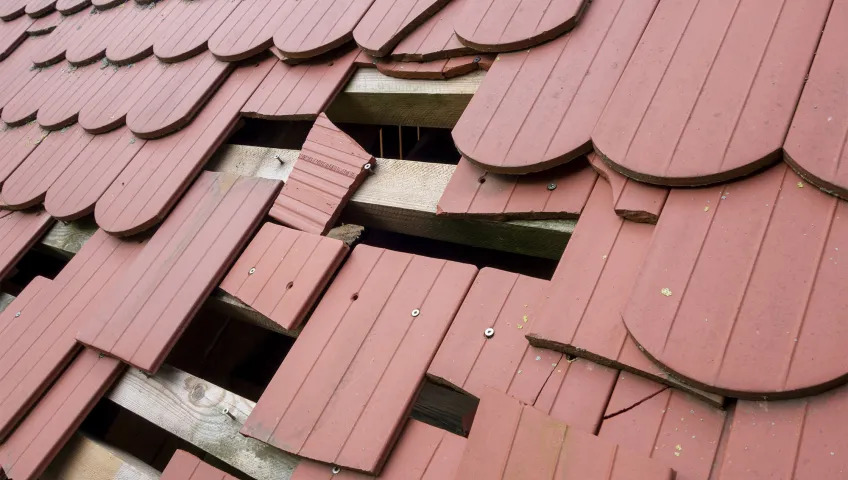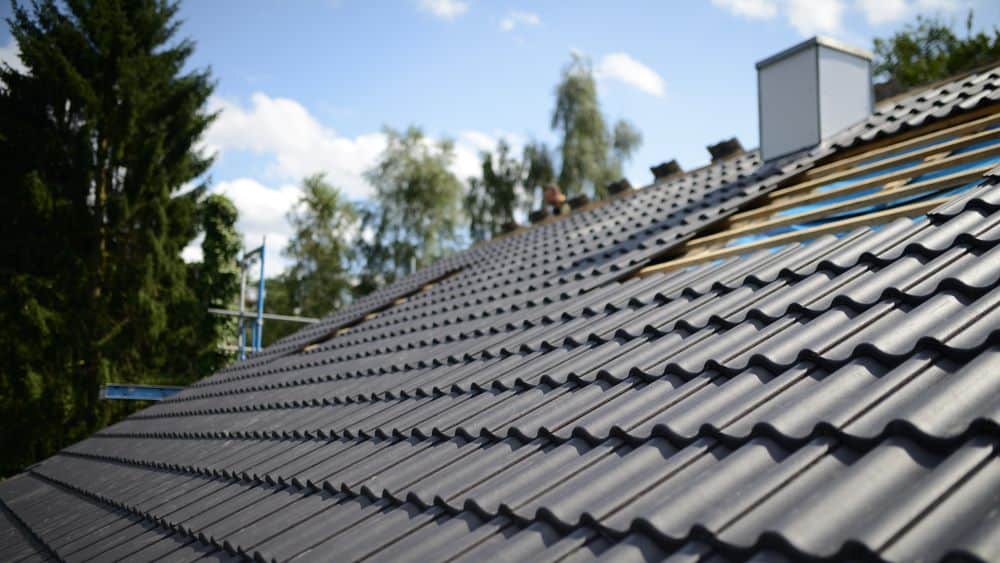Table of Contents
ToggleHow to Get Insurance to Pay for Roof Replacement
When a storm wreaks havoc on your roof, or years of wear and tear finally take their toll, the financial burden of replacing it can be daunting. The good news? Roof insurance could swoop in to save the day-if you know how to work the system.
In this guide, we’ll walk you through the roof insurance claims process, share tips to make insurance pay for your roof replacement, and explain how to dodge common pitfalls. Let’s get started!
What Is Roof Insurance?
Think of roof insurance as the superhero of your homeowners insurance policy. It’s the coverage that kicks in to repair or replace your roof when damage strikes. Whether caused by storms, hail, or unforeseen disasters, roof insurance helps minimize out-of-pocket expenses.
However, not all damage is covered, so understanding your roof damage insurance policy is key to ensuring you can claim when you need it most.
The Basics of Roof Replacement Insurance Coverage
Insurance for roofs can vary greatly depending on:
- The type of damage (storm vs. wear and tear).
- The age of your roof (older roofs might have limited coverage).
- The terms of your policy (actual cash value or replacement cost).
It’s crucial to know whether your policy offers roof replacement insurance coverage or just roof repair coverage.
Spoiler alert: If your roof is ancient or poorly maintained, your insurer may only cover partial costs—or deny your claim altogether.
How Roof Coverage Works?

The roof, of all the aspects of your house, has the greatest direct exposure to the weather. There is the threat of major snow, hail, or ice storms in northern regions. Tornadoes and cyclones are very common in the Midwest. There is a risk of gales and hurricane-force winds in tropical climes.
Mother Nature can cause not just direct harm, but also indirect damage, such as a powerful windstorm that topples a tree onto your roof. Wildfires may erupt. Or there could be more unlikely events, such as debris from an explosion or an aeroplane falling down on the roof from above.
Fortunately, because your roof is a major element of your home’s structure, the dwelling coverage section of your homeowners’ insurance policy will usually insure you against such risks. The homeowner may be eligible for a total or partial roof replacement as a result of the damage and destruction caused by such incidents.
Roof Cost Considerations

The cost of a roof is based upon a number of factors, beginning with the roofing materials you select (ranging from cheap three-tab asphalt shingles up to architectural shingles or even slate). Other elements that affect the cost include the roofing contractor you hire, the pitch (the steepness of your roof), and the square footage of your roof.
A three-tab composite roof for a modest house can be had for as little as $5,000. A typical architectural asphalt shingle roof costs between $4.00 and $5.50 per square foot in the United States, including all demolition, permit fees, trash disposal, and cleanup.
Typical average costs of different roofing options:-
- 30-year shingles:- $10,000 to $15,000
- 50-year shingles:- $10,000 to $20,000
- EPDM rubber:- $6,000 to $14,000
- TPO or PVC membrane:- $10,000 to $15,000
- Wood shingles:- $14,000 to $25,000
- Aluminum shingles:- $14,000 to $28,000
- Three-tab asphalt shingles:- $8,000 to $12,000
- Steel shingles:- $12,000 to $25,000
- Clay tiles:- $20,000 to $50,000
- Standing-seam steel roofing:- $21,000 to $30,000
- Natural slate:- $25,000 to $50,000
- Concrete tile:- $25,000 to $40,000
Step-by-Step: Filing a Roof Insurance Claim
Here’s a simplified guide to filing a roof insurance claim:
1. Document the Damage
Before anything else, document the damage thoroughly. Take clear photos and videos of the affected areas. If possible, snap a few shots during or immediately after the event causing the damage—this provides excellent evidence.
2. Review Your Policy
Break out your roof damage insurance policy and check the fine print. Key things to look for include coverage limits, exclusions, and whether your policy covers replacement costs or depreciated value.
3. Contact Your Insurance Company
Reach out to your insurance provider as soon as possible. Be prepared to provide:
- Photos of the damage.
- The date of the event causing the damage.
- An estimate (if available).
4. Schedule a Roof Inspection
Your insurer will likely send an adjuster for a roof insurance inspection process. Their job? Assess the damage and determine whether it’s covered under your policy.
5. Hire a Roofing Contractor
For accurate repair or replacement estimates, hire a trusted contractor to evaluate the damage. Pro tip: Ensure they have experience dealing with roof insurance claims processes.
Common Reasons for Insurance Roof Replacement Denial
Getting denied for a claim feels like a gut punch. Here’s why it happens and how to avoid it:
1. Wear and Tear Isn’t Covered
Insurance loves disasters, not age. Regular maintenance prevents damage claims from being chalked up to wear and tear.
2. Your Roof Is Too Old
Most policies offer prorated coverage for older roofs, meaning the insurer reimburses less based on depreciation.
3. Lack of Maintenance
Skipped inspections or neglected repairs? That’s a fast-track ticket to claim denial.
4. Improper Filing
Incomplete documentation or missed deadlines can lead to rejection. Always stay on top of paperwork and timelines.
Roof Repair vs. Replacement Insurance: Which Is Better?
Your policy may differentiate between repairs and replacements. While roof replacement cost covered by insurance is ideal, sometimes only repairs are deemed necessary. Here’s how to navigate:
- Repair: Recommended for minor damage, like missing shingles or small leaks.
- Replacement: Needed for structural issues, severe storm damage, or advanced aging.
Pro tip: Work with your contractor to make a case for replacement when repairs aren’t enough.
Tips for Winning a Roof Insurance Claim
Making a strong case to your insurer can feel like walking a tightrope. Here are tried-and-true roof insurance claim tips:
1. Be Persistent
Don’t accept a lowball offer or denial without challenging it. Appeal if needed.
2. Leverage Professional Help
Roofing contractors and public adjusters can bolster your claim by providing expert reports.
3. Keep Maintenance Records
Proof of regular maintenance can debunk wear-and-tear claims.
4. Be Clear and Concise
When communicating with your insurer, stick to facts. Avoid exaggeration or speculation.
Claim with your Homeowner’s Insurance within 30 Days
In most areas, a homeowner must make a claim within 30-60 days. When a claim is not presented on time, it is denied.
When there are a lot of claims, the sooner you submit your paperwork, the faster your claim will be processed.
The homeowners insurance process to replace your roof
You now know the five things you need to know about obtaining insurance to cover the cost of a roof replacement. You’re ready to file an insurance claim if you believe your roof has been damaged by a storm.
But, before you contact your insurance carrier, don’t you want to learn more about the claim process? While knowing what we’ve already discussed is helpful, this post doesn’t go into detail about how to file a claim.
That’s why we wrote another post outlining the steps involved in filing an insurance claim to rebuild a storm-damaged roof and what to expect.
Roof Replacement Cost Covered by Insurance: What to Expect
The cost of replacing a roof varies based on size, materials, and location. While insurers typically cover most of the expense, you may still have out-of-pocket costs like deductibles. For instance:
- Standard Shingle Roof Replacement: $8,000–$15,000
- Metal Roof Replacement: $15,000–$25,000
Ensure your policy’s replacement cost clause covers these amounts adequately.
How to Prevent Future Roof Insurance Issues
Nobody wants to go through the insurance process twice. Here’s how to stay ahead:
- Schedule annual inspections.
- Address minor damage promptly.
- Upgrade to impact-resistant materials (and check for discounts!).
- Keep your policy up to date.
Tips to Save on New Roof Costs
Depending on the roofing material chosen, a roof replacement might cost anywhere from $1.70 to $4.70 per square foot. 12 Roofing estimates are sometimes quoted by the “square,” which refers to a 10’x10′ space, or 100 square feet (thus you would receive a price for $325 per square).
Someone might be able to assist you with asphalt shingle repair for a lower price. Tile and metal roofs will set you back a little more. Here are some pointers on how to keep your repair and replacement costs to a minimum.
1) Shop around: Before choosing someone, get quotations from many roofers and always ask for and check local references. Be sceptical of exceptionally inexpensive bids, since they may indicate poor workmanship, and ensure that roofers provide a warranty on materials and installation.
2) Time it right: Late summer and fall are the busiest seasons for roofers. If you replace your roof in the late winter or early spring, you can get a better deal or a discount.
3) Do it (or some of it) yourself: Think about doing some of the job yourself. If you have the time, the right tools, and a strong stomach for heights, removing old roofing before the contractor arrives may help you save money.
4) Consider an overlay: Installing new shingles on top of old ones is known as an overlay. Overlays require fewer hours of labour and cost less than a full replacement because the original roofing remains in place. An overlay, on the other hand, may void or limit the guarantee on roofing materials.
Due of additional work and job waste, overlays typically raise future replacement costs.
5) Do your research: Before consulting with contractors, determine the size and intricacy of your roof, as well as the specific materials you want installed.
What kind of Damage not covered in Roof Damage?
When it comes to roof damage, your homes insurance company is only too eager to assist you, unless you are the one who caused the damage.
This is only one of the reasons why you should evaluate your roof on a regular basis. If you’re thinking about buying a new home, you’ll also want to learn about the roof’s overall characteristics.
You should know things like how old it is, whether it has been repaired, what material it is constructed of, and when it was last inspected.
How To Get Insurance To Pay For Roof Replacement
Claim Scrutiny
An insurance company will analyse a claim for roof replacement, regardless of the type of roof covering materials or damaged areas of the roof, and expect the policyholder to produce thorough paperwork, before and after images, and other facts to validate a claim for processing.
So, if you want to know whether your insurance will cover the cost of your roof replacement, you’ll need to check your policy carefully to see what you’ll need to do ahead of time to file a valid claim.
Review Your Policy Coverage
Examining your policy’s coverage will help you figure out what kind of coverage you have for roof replacement. A roof that is less than ten years old is usually fully covered for repairs or replacement of damaged areas of the roof.
Always think Beyond the 10 Year Mark
When a roof is older than ten years, a homeowner is usually reimbursed for the roof’s diminishing or depreciated worth. The term “depreciated value” simply indicates that an insurance provider analyses a roof based on its age and wear and tear. The insurance company then assigns a lower value to a roof before it has been damaged.
It’s Depreciated Value
Other insurance policies only cover the depreciated value of the roof, regardless of whether it is newer or older, while others cover full repair or replacement costs regardless of the age of the roof.
Inspection and Prompt Reporting
Regardless of the circumstances surrounding a damaged roof, most insurance companies dispatch an inspector to examine and confirm the claim. If the inspector decides that the damage was caused by normal ageing, deteriorating circumstances, or everyday wear and tear, such findings are normally understood as routine maintenance and are not covered by a homeowner’s insurance policy.
Estimates Insurance Amount
Insurance companies may also request estimates from licenced roofing contractors for valid repair and replacement work, or they may employ their own cost estimators. It’s critical to have written estimates that are exact and detailed, as well as verification that a roofer is licenced and insured.
Finding a contractor who is specifically experienced in giving estimates for insurance claims and is comfortable with guiding a homeowner through the jungle of red tape to get a replacement claim authorised is another bonus in the estimate and claim process. All of this data is critical for expediting the claim process.
Conclusion
Securing insurance to pay for a roof replacement isn’t magic-it’s strategy. From understanding your policy to mastering the roof insurance claims process, being prepared makes all the difference. Next time a storm clouds your skies, you’ll have a clear path to financial relief.
Remember: The key to success lies in staying informed, proactive, and persistent. Oh, and a dash of humor never hurts-after all, even roofs need a break sometimes!






